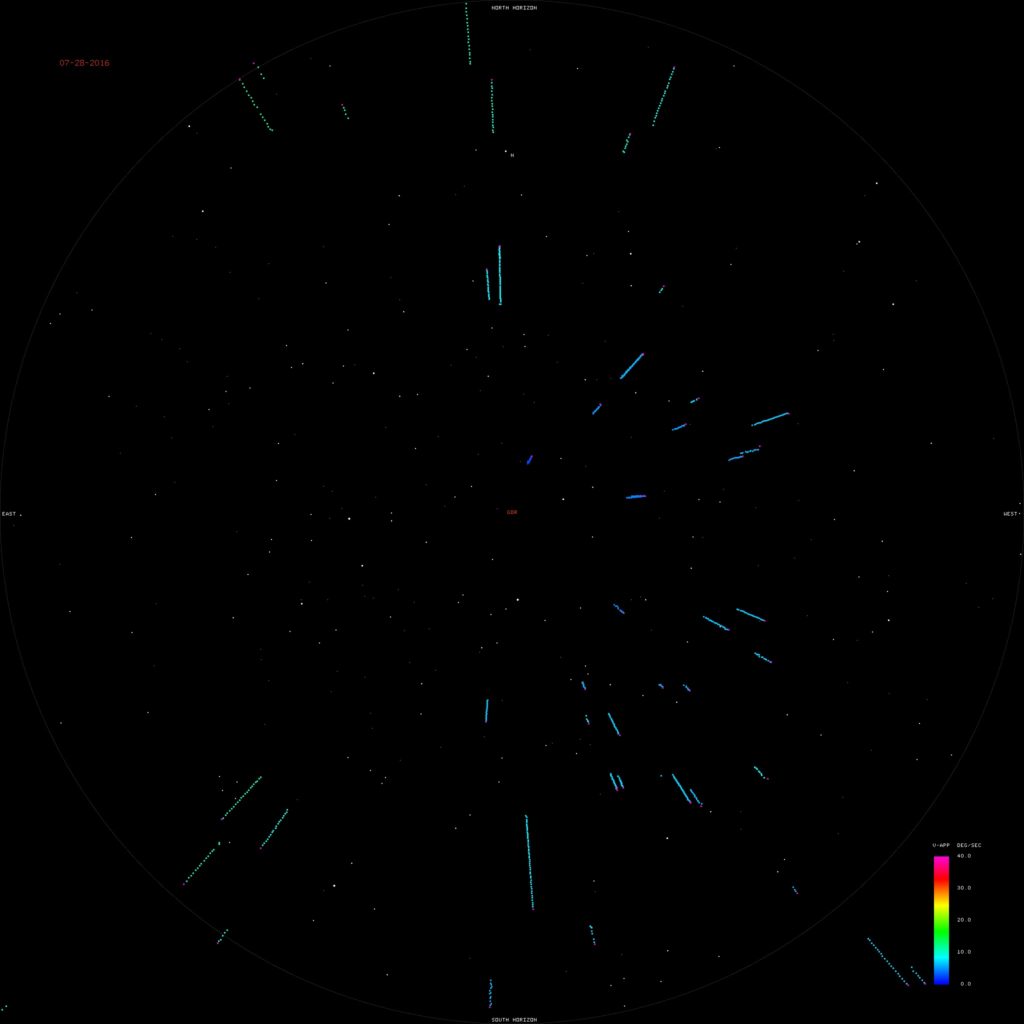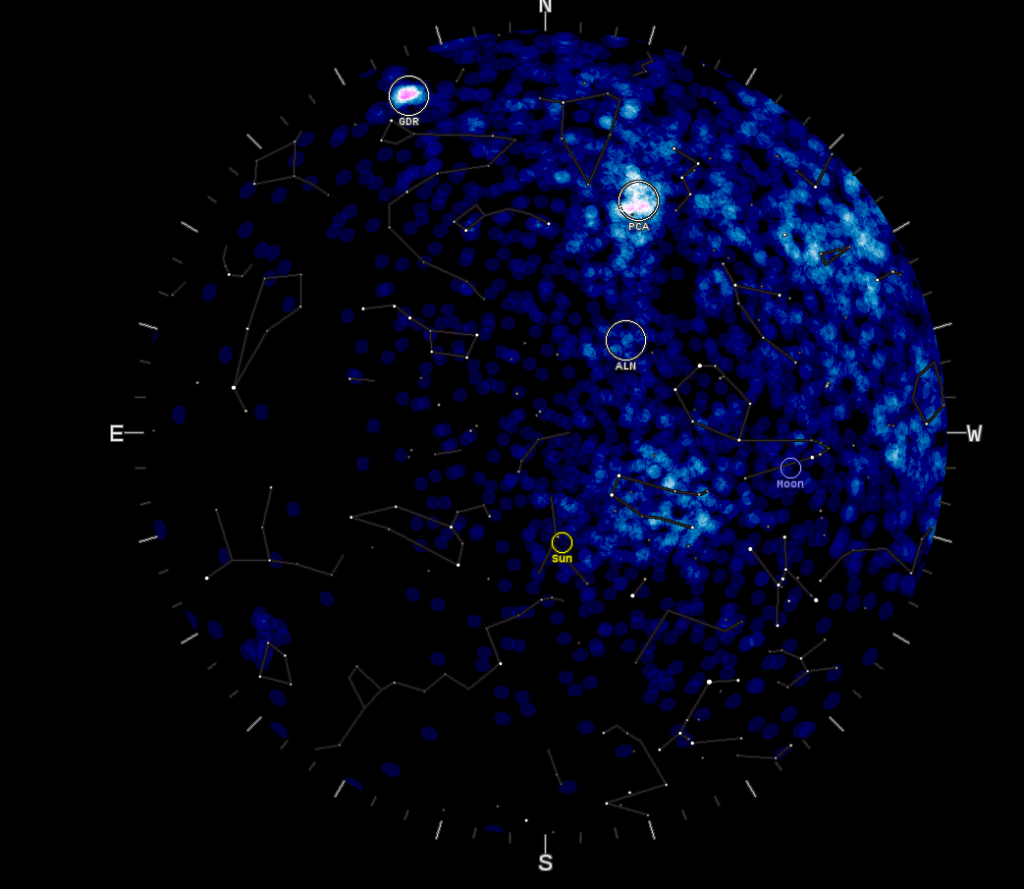The Gamma Draconids (GDR-184) displayed a noticable activity this year. All observers and camera network operators are encouraged to check their records for this minor shower.
Introduction
Last few nights the weather was not favorable at all, but Benelux CAMS data registered a remarkable number of meteors from a minor shower γ-Draconids (GDR-184). Most of the CAMS stations were clouded out, the few that could function under partial clear sky had several meteors from this minor shower radiant.
Past observations
The activity of this minor shower was first noticed by CAMS in July 2011 (Jenniskens and Holman, 2011). It wasn’t new and was mentioned before by Babadzhanov (1963) and SonatoCo (2009). The activity appears typically between July 24 and 28 but can be detected until begin of August. With a radiant at α= 278°, δ = 49° and Vg = 25 km/s these meteors are real look-alikes as the later Kappa Cygnids. Also last year this stream popped up distictly from the CAMS orbit data (Figure 1).

Figure 1 GDR (184) radiants from CAMS in 2015 (P. Jenniskens).
2016 GDR activity
Although the weather was most uncooperative recent nights, the CAMS network coordinator, Martin Breukers, noticed a remarkable number of possible GDR (184) shower meteors in the CAMS data of the past few nights. Figure 2 shows a plot of all possible GDR meteors recorded past night. On the mailing list MeteorObs several messages mentioned activity from the Omicron Draconids reported by visual observers. Also CMOR captured significant meteor activity from the GDR (184) radiant (see Figure 3).
All meteor observers and camera network operators are encouraged to have a look for additional data on this minor shower in their observing data.

CAMS BEnelux, all possible GDR meteor trails 27-28 July 2016 (Martin Breukers).

The GDR (184) radiant pops out of the CMOR map 29 July ~20h UT
References
Babadzhanov P. (1963). “Orbital elements of photographic meteors”. Smithsonian Contrib. Astrophys., 7, 287–291.
Holman D. And Jenniskens P. (2012). “Confirmation of the July Gamma Draconids (GDR, IAU #184)”. WGN, Journal of the IMO, 40, 36–41.
SonotaCo (2009). “A meteor shower catalog based on video observations in 2007–2008”. WGN, Journal of the IMO, 37, 55–62.





